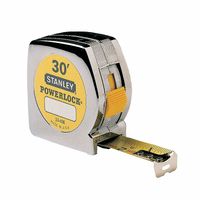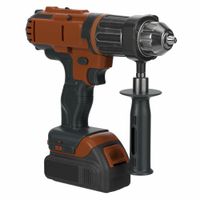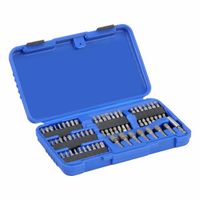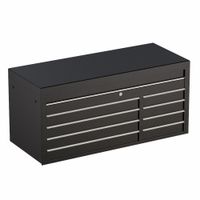Call +(254) 703 030 000 / 751 483 999 / 721 704 777
- Home
- Tools
.....Read More
Frequently Asked Questions
What are the best hand tools for home repair?
For basic home repairs, a good set of hand tools is essential. A claw hammer is indispensable for driving and removing nails. A tape measure is crucial for accurate measurements. Screwdrivers, both Phillips and flathead, in various sizes, are vital for fastening and loosening screws. Pliers, like slip-joint and needle-nose, are useful for gripping, bending, and cutting. An adjustable wrench handles various nut and bolt sizes. A utility knife is handy for cutting tasks. A level ensures things are straight, and a good toolbox keeps everything organized and accessible. These tools cover a wide range of common household fixes.
What are the differences between electric and battery-powered tools?
Electric tools typically require a continuous power source, offering consistent power and eliminating the need for battery charging. They are often more powerful and suitable for heavy-duty, prolonged use. Battery-powered tools, on the other hand, provide portability and convenience as they are cordless. While they offer less continuous power and limited runtimes due to battery life, advancements in battery technology are constantly improving their performance and making them suitable for a wider range of tasks, especially those requiring mobility.
How do I choose the right power tool for my project?
Choosing the right power tool involves considering the project's scope, materials, and required precision. For heavy-duty tasks like framing or demolition, a circular saw or reciprocating saw is essential. For detailed work or finishing, an orbital sander or a multi-tool might be better. Consider the power source (corded, cordless, battery life), ergonomics for comfort during extended use, and safety features. Researching tool reviews and understanding your specific needs will guide you to the most efficient and effective choice, ensuring a successful project outcome.
What are essential measuring tools for construction?
Essential measuring tools for construction include tape measures for linear dimensions, providing accuracy for layouts and material cuts. Levels, such as spirit levels or laser levels, ensure horizontal and vertical alignment, critical for structural integrity. Squares (framing, combination) are vital for checking and creating precise right angles. Chalk lines are used for marking straight lines over long distances. For more complex measurements and angles, a total station or theodolite might be employed. These tools collectively ensure accuracy, efficiency, and safety throughout the construction process, from foundational work to finishing touches.
How do I maintain and store my tools properly?
Maintaining and storing tools properly is crucial for their longevity and your safety. After each use, clean tools thoroughly to remove dirt, debris, and moisture, which can cause rust or damage. For metal tools, consider applying a light coat of oil to prevent corrosion. Store tools in a dry, organized space, such as a toolbox, cabinet, or pegboard. This prevents them from getting lost, damaged, or posing a tripping hazard. Keep sharp edges protected and store tools by type or function for easy access. Regularly inspect tools for wear and tear, and repair or replace them as needed to ensure optimal performance.
What are the most durable socket and bit sets for professional use?
For professional use, durability in socket and bit sets often comes down to material and manufacturing. Look for sets made from chrome vanadium steel (Cr-V) or chrome molybdenum steel (Cr-Mo), as these alloys offer excellent strength and corrosion resistance. Cr-Mo is particularly favored for impact-rated tools due to its superior toughness. Consider sets with a black oxide or phosphate finish for added rust protection. Reputable brands known for durability include Snap-on, Mac Tools, SK Hand Tools, and Craftsman Professional. Additionally, features like six-point sockets (for better grip and reduced stripping), well-machined tolerances, and robust cases contribute to longevity.
What safety precautions should I take when using power tools?
When using power tools, always wear appropriate personal protective equipment (PPE), including safety glasses, hearing protection, and gloves. Ensure the work area is well-lit and clear of obstructions. Before starting, inspect tools for damage, ensuring all guards are in place and functional. Always unplug tools before making adjustments or changing accessories. Use the correct tool for the job and follow manufacturer instructions. Keep children and bystanders at a safe distance. Store tools properly when not in use. Never bypass safety features or operate tools under the influence of drugs or alcohol.
How do tool balancers improve workplace efficiency?
Tool balancers significantly enhance workplace efficiency by reducing operator fatigue and increasing productivity. They suspend tools, effectively neutralizing their weight, which allows workers to maneuver equipment with minimal effort. This ergonomic improvement leads to fewer strain injuries and repetitive stress disorders, fostering a healthier and safer work environment. By making tools feel weightless, balancers enable faster, more precise movements, reducing cycle times for tasks like assembly, grinding, or welding. Furthermore, the constant tension provided by the balancer prevents tools from being dropped, minimizing damage and downtime. This combination of improved ergonomics, increased speed, and enhanced safety ultimately boosts overall operational efficiency.
What are the top brands for MRO tools and equipment?
The top brands for MRO (Maintenance, Repair, and Operations) tools and equipment vary depending on the specific product category, but some consistently highly-regarded names include Stanley Black & Decker (for hand tools and power tools), Milwaukee Tool (known for heavy-duty power tools), DeWalt (another popular power tool brand), and Makita. For safety equipment, 3M and Honeywell are prominent. Grainger and Fastenal are well-known distributors offering a wide range of MRO supplies from various manufacturers. The "best" brand often depends on the specific application, budget, and desired durability.
How do I select the right fasteners for my tools and materials?
Selecting the right fasteners involves considering several factors. First, identify the material you're joining – wood, metal, plastic, or masonry – as each requires specific fastener types for optimal grip and durability. Next, assess the application's load-bearing requirements; heavy-duty projects need stronger fasteners. Consider environmental conditions, such as moisture exposure, which may necessitate corrosion-resistant options like stainless steel. The type of tool you'll use is also important; ensure the fastener is compatible with your drill, driver, or wrench. Finally, match the fastener's length and diameter to the thickness and strength of the materials being joined to ensure a secure and lasting connection.





